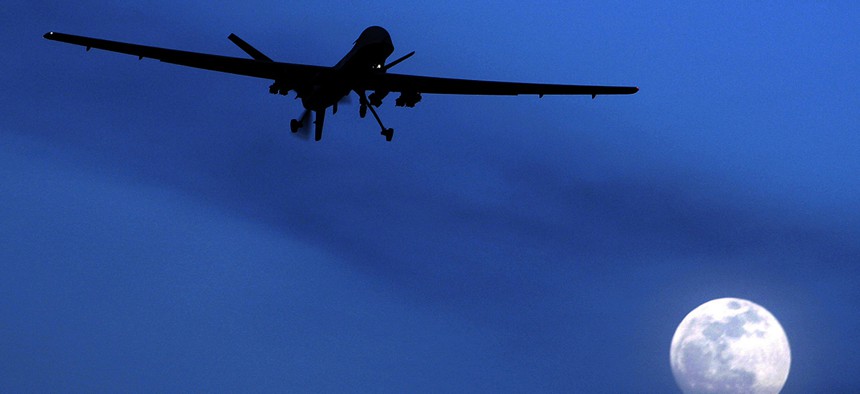Uber Wants to Fly Customers Around in Massive Autonomous Drones

Your future ride? Kirsty Wigglesworth/AP File Photo
It seems self-driving cars just aren’t enough.
Self-driving cars just aren’t enough.
Uber, the ride-hailing taxi service, is apparently seriously exploring whether it can develop aircraft that could take off and land without a runway, and fly passengers autonomously to wherever they want to go.Recode reported Sunday (Sept. 25) that Uber’s head of product, Jeff Holden, said the company was looking into developing technology like this.
According to Holden, the company is looking into what are called VTOL (vertical take-off and landing) aircraft, which might sound a bit like a helicopter, but they generally refer to planes with fixed wings. There aren’t a lot of these types of aircraft out there, because it takes a large amount of energy to get a plane off the ground without giving it a running start—you’ve either got to use jet engines (like the Harrier Jump Jet) or massive propellers (like the V-22 Osprey). While there are some companies that are looking into building small drones for delivery that operate this way—as they would provide greater time in the air, and you don’t need a lot of space to land them—there aren’t too many projects like this for human-shaped cargo. The Pentagon is in the process of designing a drone rather like the one Uber apparently is working on, but the military’s drone is still very much in the concept phase. (Uber declined to comment.)
Although Uber recently managed to bring a small pilot program of self-driving cars to the streets of Pittsburgh, the company still has a ways to go before its cars are going to drive themselves around without any human intervention. On top of that, national regulation for ensuring these sorts of cars operate safely and legally on US highways is still nascent. While Uber has a history of circumventing regulation where possible, it’s harder to do so when it comes to aircraft.
Holden said at the conference that Uber plans to bring these planes to consumers within 10 years, but that appears to be an aggressive timeline. The US has strict airworthiness guidelines for new aircraft (which can be avoided in testing as Facebook and Google have shown, but not in commercial use), and right now, US regulations don’t permit autonomous flight for delivery drones, let alone massive drones that carry people in them. Uber would need develop an entirely new type of aircraft and have it approved by a country’s aviation authority. That’s seems like a particularly daunting challenge for a company that has only had a robotics research facility for a little over a year.
Other companies are looking into similar concepts. At this year’s Consumer Electronics Show in Las Vegas, Chinese drone manufacturer Ehang showed off a large autonomous drone that can transport someone on its own about 50 miles. Organ transplant firm United Therapeutics has ordered 1,000 of them over the next 15 years, but much like Uber’s proposed craft, it’s not entirely clear how these would be received by the FAA, any other country’s aviation authority, or the general public.





